Abstract
Weiss, K. F. (Iowa State University, Ames), J. C. Ayres, and A. A. Kraft. Inhibitory action of selenite on Escherichia coli, Proteus vulgaris, and Salmonella thompson. J. Bacteriol. 90:857–862. 1965.—The resistance of three microorganisms, Escherichia coli (ISU-41), Proteus vulgaris (ISU-37c), and Salmonella thompson (ISU-86-2), to increasing concentrations of selenite was determined. E. coli was completely inhibited by 1.25% sodium hydrogen selenite, and 0.25% sodium hydrogen selenite caused a pronounced lag. P. vulgaris survived selenite concentrations of over 3%. S. thompson was inhibited completely by 3% selenite but not by 2.5%, although there was a considerable lag and a decrease in total growth. The relationship of growth, uptake, and reduction of selenite was determined. The susceptible E. coli incorporated up to twice as much selenium as did the other two organisms during the early stages of incubation. Radioautographs of seleno analogues of sulfur-containing amino acids revealed the presence of seleno-cystine in all three organisms, and seleno-methionine in E. coli. Compounds having RF values corresponding to possible oxidation products of seleno-methionine were present in the hydrolysates of P. vulgaris and S. thompson. Kinetic aspects of selenite uptake, rather than the ultimate localization of selenite in the cell protein, appear to be the factors that determine the degree of resistance or of susceptibility to selenite.
Full text
PDF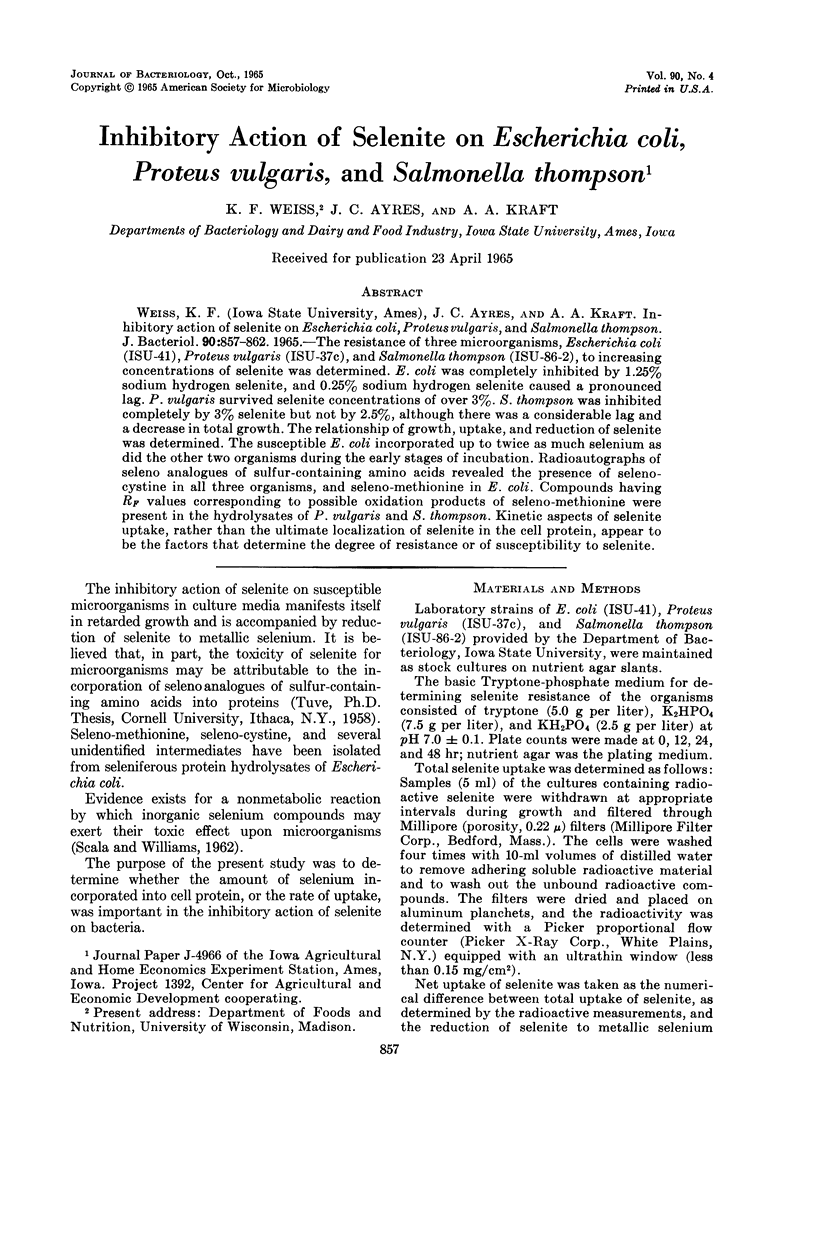
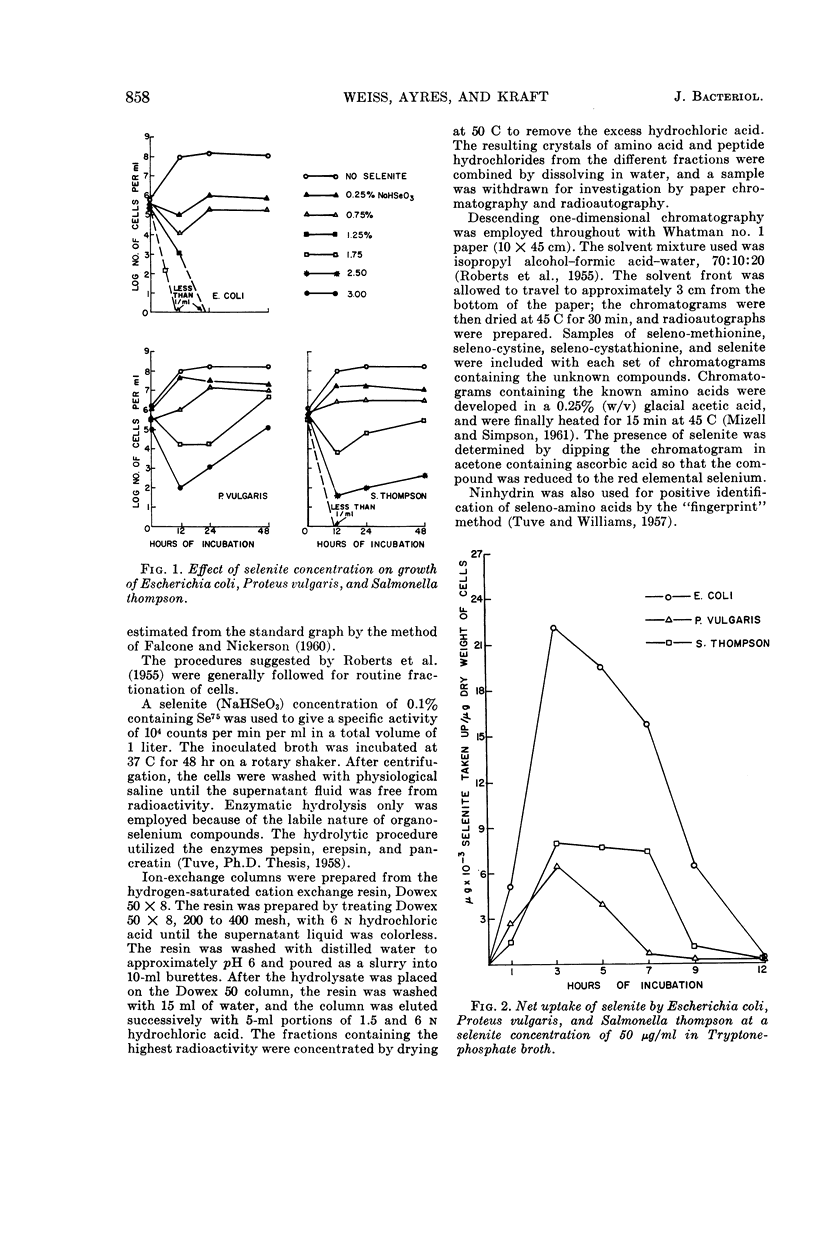
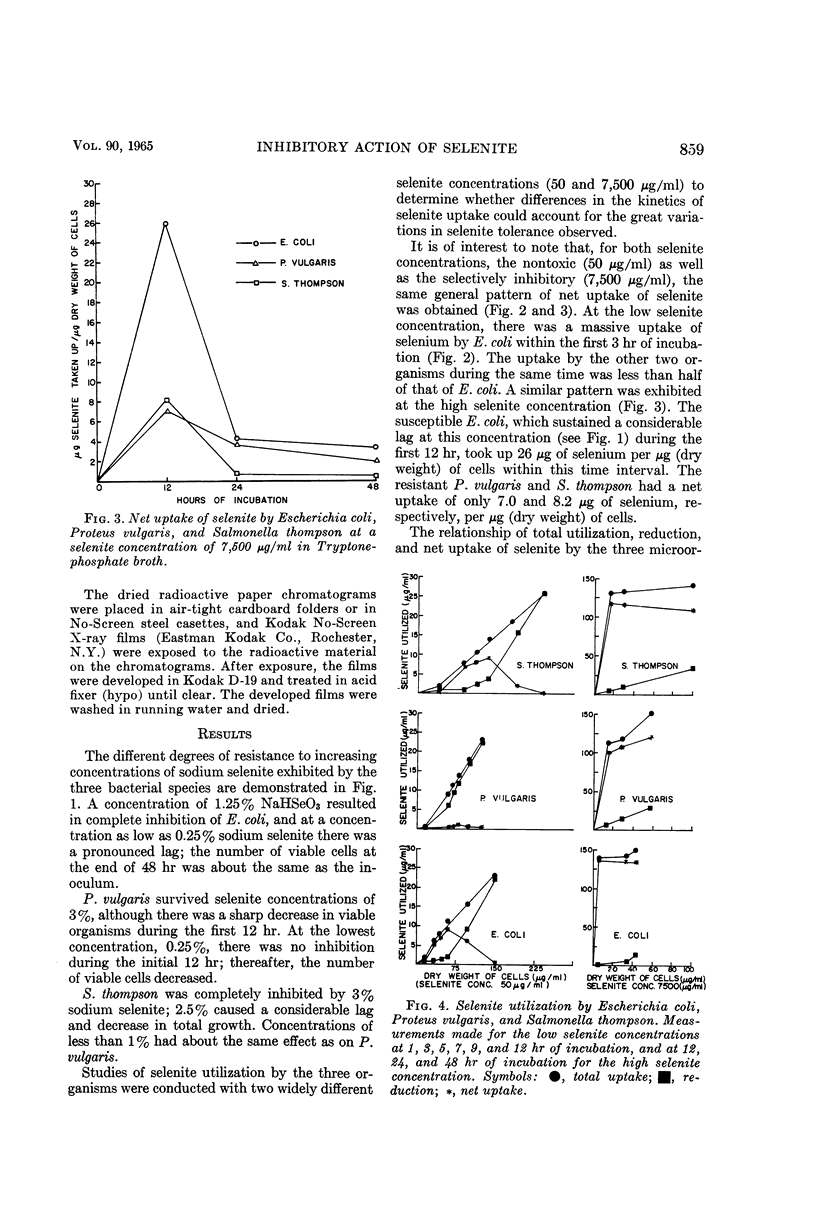
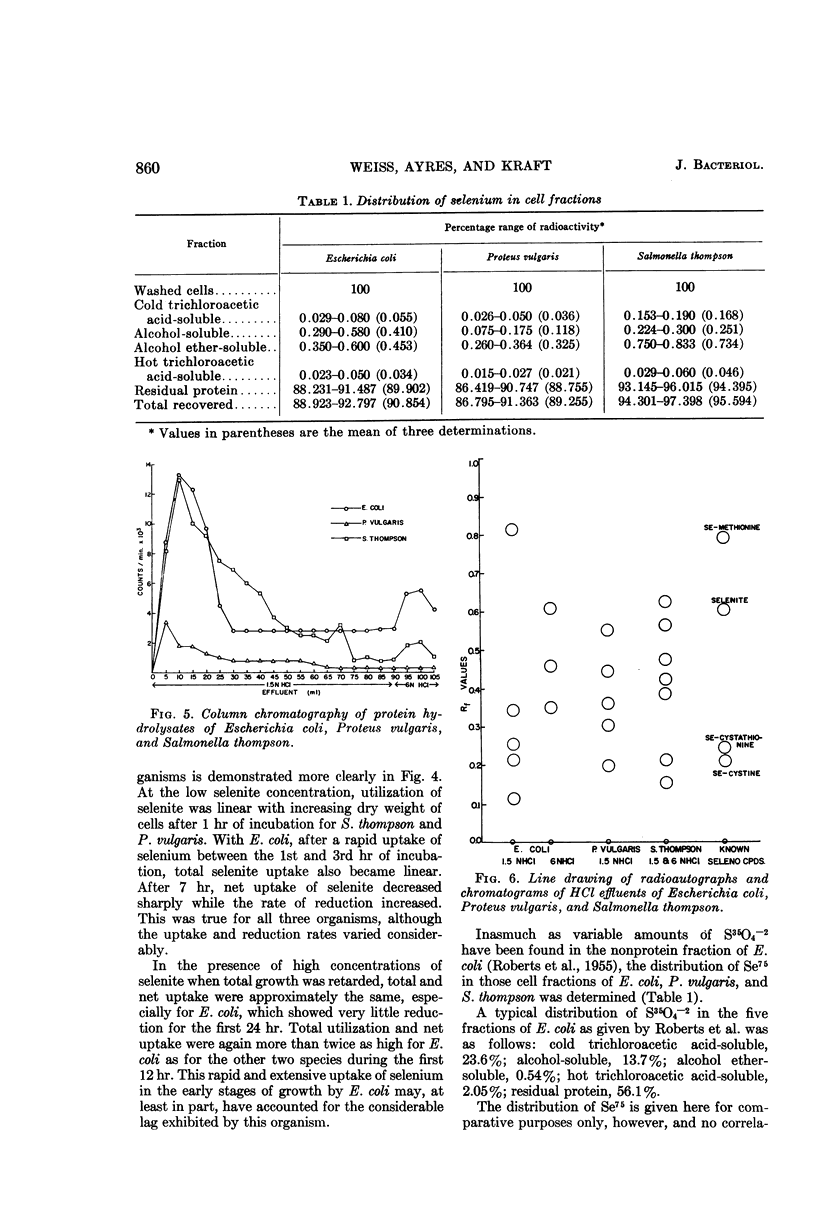
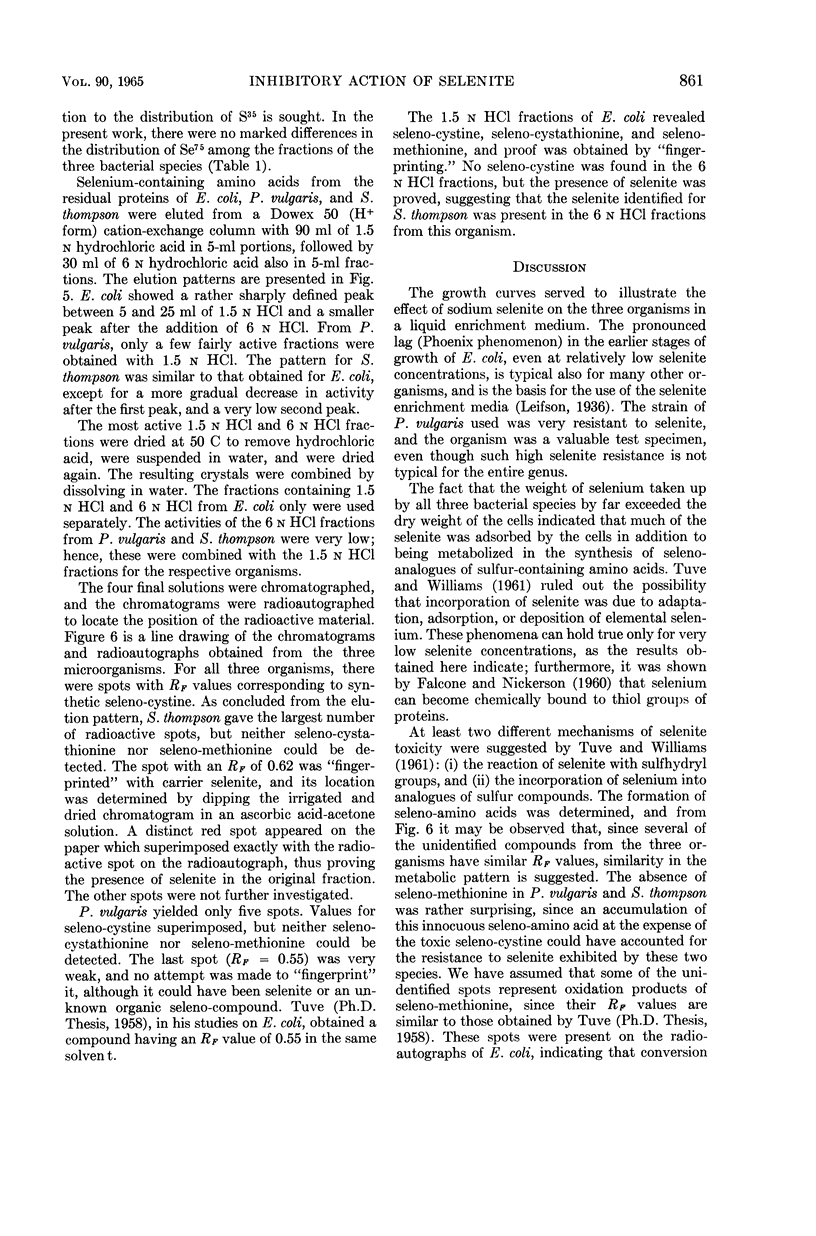
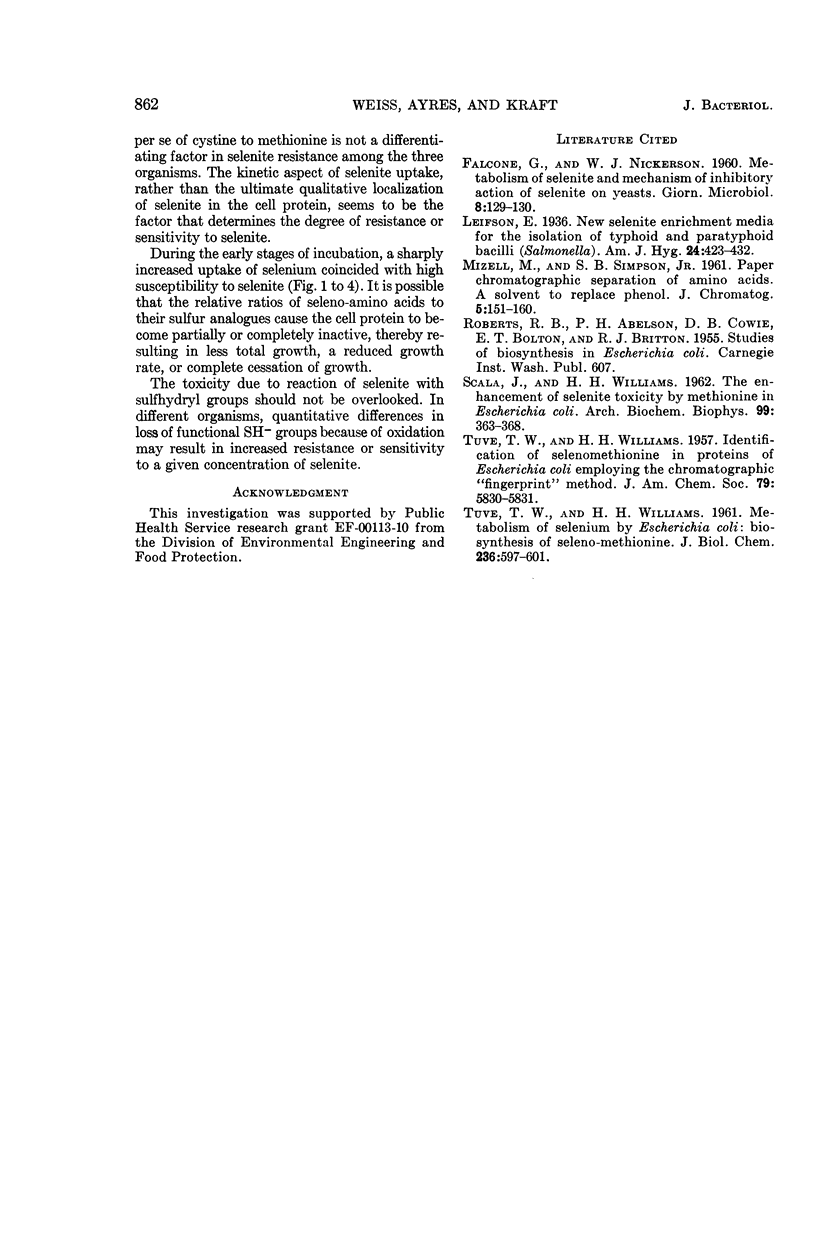
Selected References
These references are in PubMed. This may not be the complete list of references from this article.
- SCALA J., WILLIAMS H. H. The enhancement of selenite toxicity by methionine in Escherichia coli. Arch Biochem Biophys. 1962 Dec;99:363–368. doi: 10.1016/0003-9861(62)90280-1. [DOI] [PubMed] [Google Scholar]
- TUVE T., WILLIAMS H. H. Metabolism of selenium by Escherichia coli: biosynthesis of selenomethionine. J Biol Chem. 1961 Feb;236:597–601. [PubMed] [Google Scholar]


